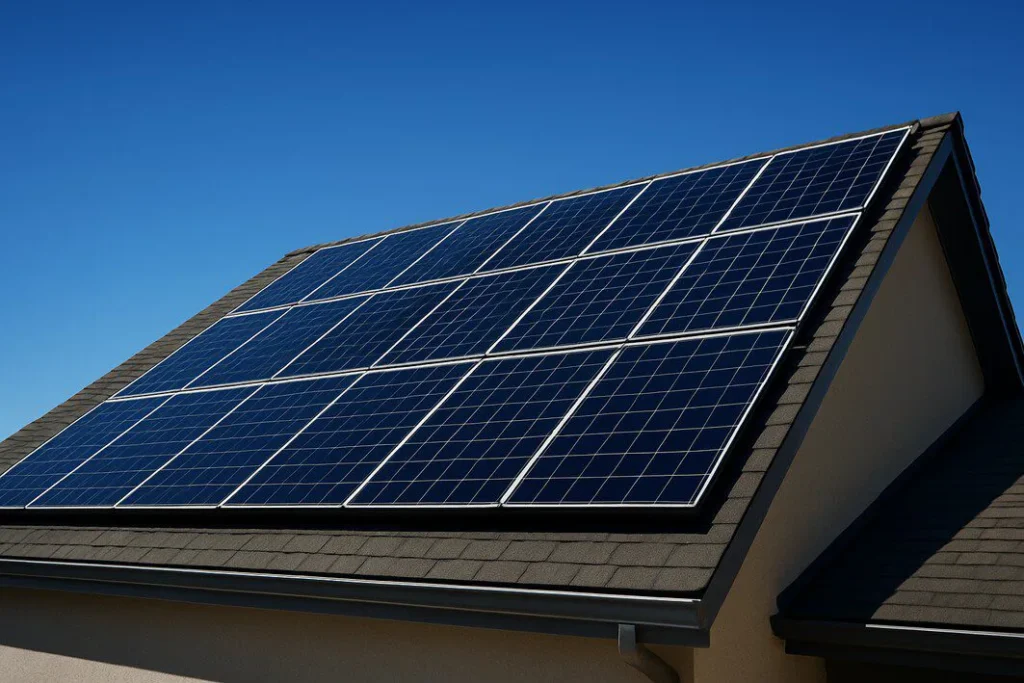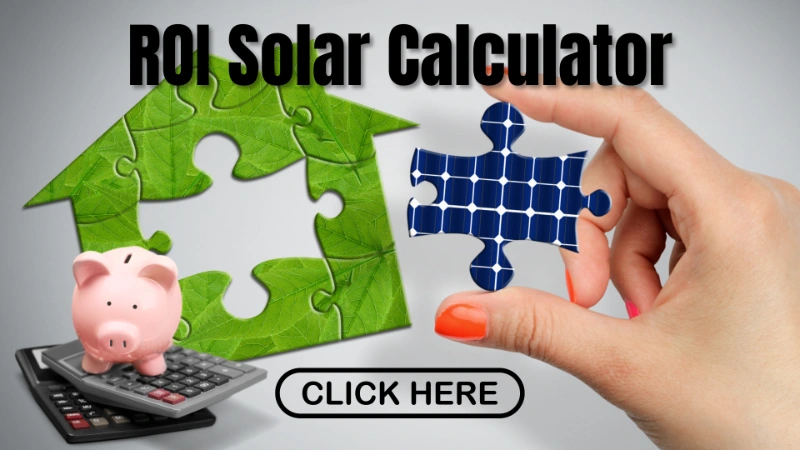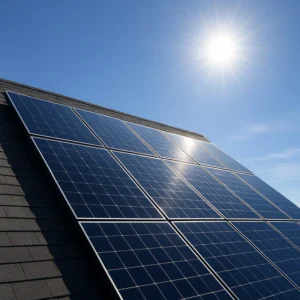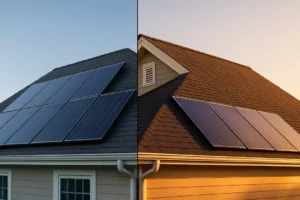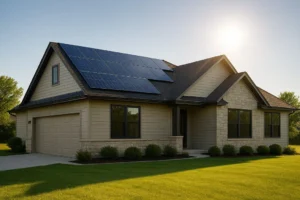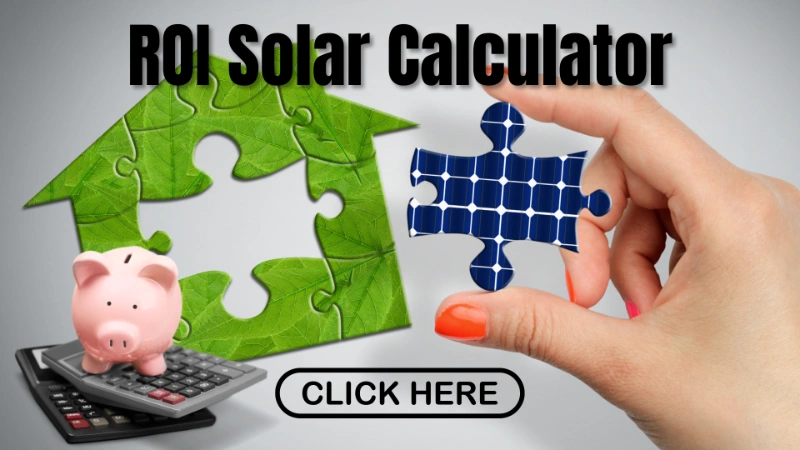If you’ve made the smart choice to go solar, you’re likely wondering how to get the absolute most out of your investment. Did you know that how your panels are positioned can make a massive difference in your energy savings? It’s one of the most critical factors for maximizing your solar output.
Table of Contents
This guide will break it all down, covering exactly how to orient solar panels to capture the most sunlight and generate the most power for your home.
Why is Solar Panel Orientation Critical?
Think of your solar panels like tiny sunflowers—they are most productive when they face the sun directly. The goal of proper orientation is to ensure your panels capture the maximum number of photons, or light particles, throughout the day and across all seasons.
When your panels are misaligned, they receive sunlight at an indirect, or oblique, angle. This means:
- Less energy is absorbed
- Less electricity is produced
- Your return on investment takes a hit
Getting the orientation right is the key to unlocking your system’s full potential from day one.
The Two Pillars of Orientation: Azimuth and Tilt
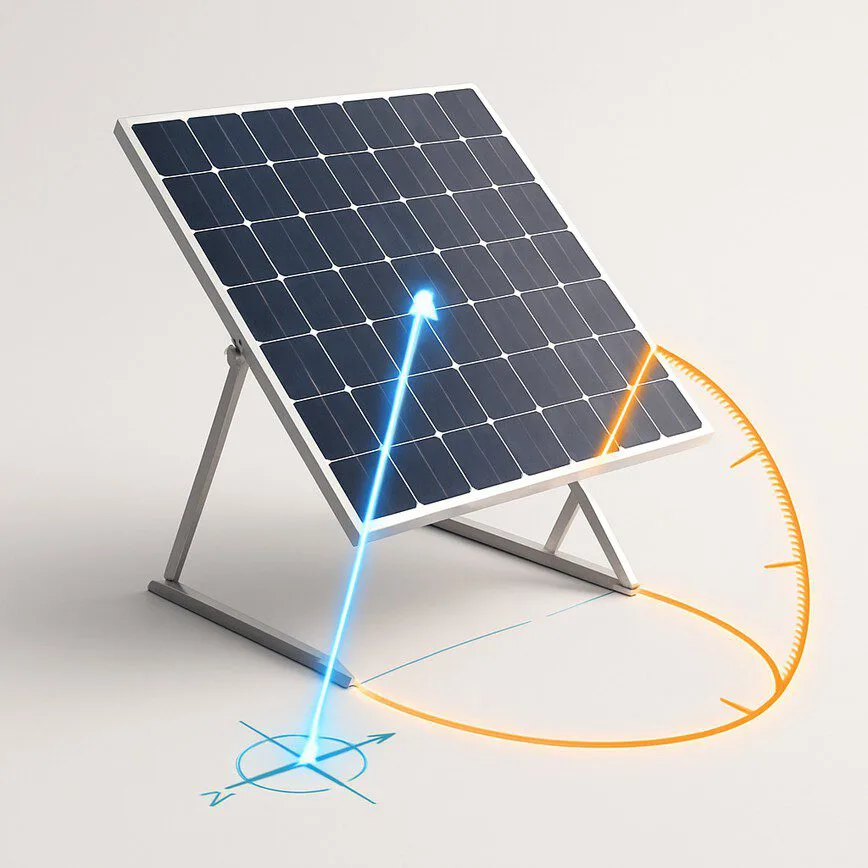
Perfect orientation comes down to two key factors: azimuth and tilt.
- Azimuth is the direction your panels face on a compass—north, south, east, or west.
- Tilt is the angle they are slanted relative to the ground.
Getting both of these right for your specific location is the secret sauce to a hyper-efficient solar array. Let’s break each one down.
Azimuth: Finding the Right Direction
For anyone in the Northern Hemisphere—including all of the United States and Europe—the sun spends its entire day in the southern half of the sky.
Therefore, to capture the most direct sunlight throughout the day, your solar panels should face True South. This isn’t the same as magnetic south, which your compass points to, but true south (180°). A professional installer will use specific tools to find this precise direction.
While true south is the gold standard, a southwest-facing orientation can sometimes be beneficial if your utility company has “time-of-use” billing. This allows you to generate more power during peak late-afternoon hours when electricity is most expensive.
Tilt: Getting the Angle Right
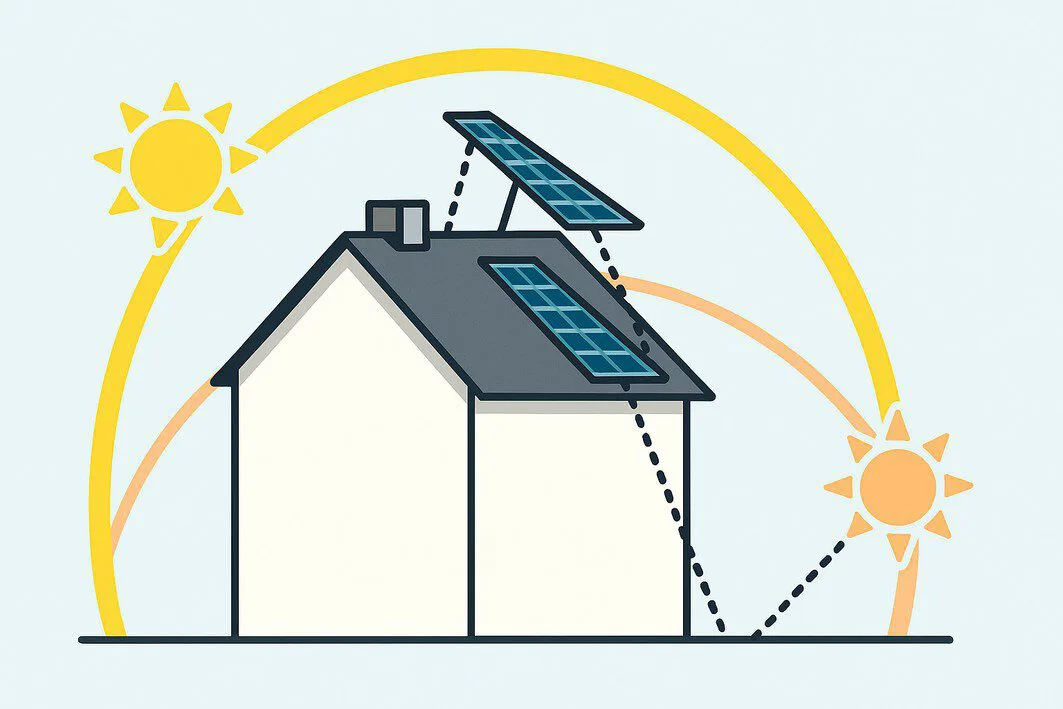
Next up is tilt. The ideal tilt angle for your panels is largely determined by your home’s latitude. A great rule of thumb is to set your panel’s tilt angle to be equal to your latitude. For example, if you live in Austin, Texas, at a latitude of about 30 degrees, your panels would perform best with a tilt of around 30 degrees.
For maximizing solar output year-round, the angle can even be adjusted seasonally. You’d want a steeper angle in the winter to catch the low-hanging sun and a shallower angle in the summer when the sun is high overhead. However, most residential solar solutions use a fixed-tilt system set for optimal annual production to keep things simple and maintenance-free.
Putting It All Together: The Perfect Setup
So, let’s put this all together. The perfect orientation means pointing your panels at true south (180° azimuth) and tilting them at an angle equal to your latitude.
Of course, every roof is different. Obstacles like trees, chimneys, or specific roof lines can require adjustments, which is where professional expertise becomes invaluable. At RenewGenius, we specialize in designing systems that account for every variable of your specific property.
Understanding these principles is the first step, but having the right equipment is just as important. The mounts and racking are what allow for this precise positioning. You can learn more about all the different components of a solar system on our website to see how it all fits together.
Your Next Step with RenewGenius
We hope this guide has helped you understand the fundamentals of how to orient solar panels. This knowledge is powerful, and we believe in empowering homeowners.
Curious to see how proper orientation impacts your bottom line? Head over to RenewGenius.com and use our free ROI calculator to get a personalized estimate of your potential savings. At RenewGenius, our focus is on residential solar solutions, ensuring that every system we design is perfectly optimized for you.

